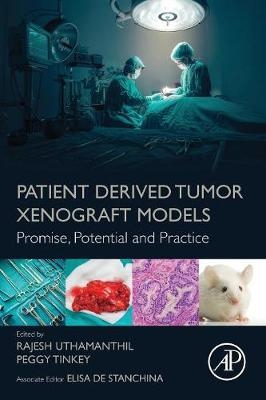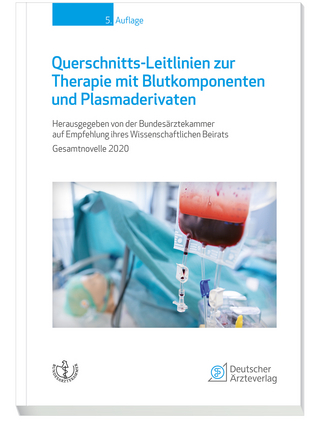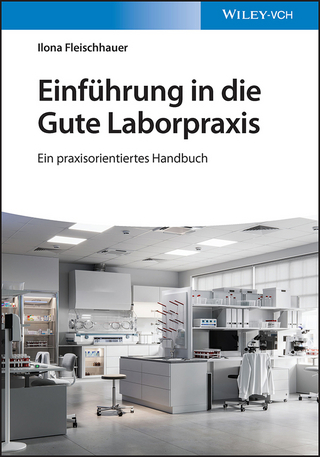
Patient Derived Tumor Xenograft Models
Academic Press Inc (Verlag)
978-0-12-804010-2 (ISBN)
In addition, proper methodologies suitable for growing different type of tumors, acquisition of pathology, genomic and other data about the tumor, potential pitfalls, and confounding background pathologies that occur in these models are also included, as is a discussion of the facilities and infrastructure required to operate a PDX laboratory.
Dr. Rajesh Uthamanthil is the director of Comparative Medicine program at Fred Hutchinson Cancer Research Center, Seattle, WA. He received Doctorate in Veterinary Medicine and Veterinary Sciences from Kerala Agricultural University, PhD in Comparative Biosciences from the University of Wisconsin Madison and completed a post doctoral fellowship at Rice University. Dr. Uthamanthil has more than 16 years of experience in animal models of human disease, most of it focused on cancer. Dr. Uthamanthil also directs the PDX core that support studies using PDX models at Fred Hutchinson Cancer Research Center. Dr. Uthamanthil has more than 20 peer reviewed publications in the area of translational research, has authored/co-authored two book chapters and has made more than 30 presentations in national and international conferences meetings. Dr. Peggy Tinkey received degrees in Veterinary Science and Veterinary Medicine from Texas A&M University, completed a postdoctoral fellowship in Pathology at Baylor College of Medicine and is a Diplomate of the American College of Laboratory Animal Medicine. She is a Professor of Comparative Medicine and Chairman of the Department of Veterinary Medicine and Surgery at the University of Texas M.D. Anderson Cancer Center, where she directs the animal research program Dr. Tinkey has extensive experience in animal models of cancer, with an emphasis of mouse cancer models that includes genetically engineered and mutant mouse models, cell line xenograft models, and patient-derived xenograft models. She has published over 25 peer-reviewed manuscripts and book chapters on animal cancers and cancer models. She combines her expertise in animal models with extensive experience in regulatory medicine and has served on the UTMDACC institutional animal care and use and biosafety committees for more than 20 years. Dr. Elisa de Stanchina is the Director of the MSKCC Antitumor Assessment Core Facility, and over the past 8 years has overseen its evolution into a state-of-the-art “Mouse Hospital that fosters preclinical drug development and coordinates efforts from basic scientists and clinicians to ensure that mouse trials effectively mimic treatment plans of human patients. She is an Associate Lab Member in the Molecular Pharmacology and Chemistry Program at Memorial Sloan Kettering Cancer Center (MSKCC). Her lab works closely with investigators to establish mouse models of cancer and has developed one of the largest Academic PDX core support programs in the U.S., with an extensive bank of clinically annotated models available to MSKCC Investigators and their collaborators. Her work has resulted in over 65 publications in prestigious peer-reviewed journals and she has recently authored one of the chapters in the new edition of the “Mouse Models of Cancer book by CSHL Press.
Section I. Mouse Xenograft Models of Cancer
Chapter 1. PDX Models: History and Development
Chapter 2. History of Mouse Cancer Models
Chapter 3. Challenges and Limitations of Mouse Xenograft Models of Cancer
Chapter 4. Tumor Heterogeneity
Chapter 5. Immunodeficient Mice: The Backbone of Patient-Derived Tumor Xenograft Models
Chapter 6. Humanized Mice and PDX Models
Section II. Components of a PDX Program
Chapter 1. Regulations of Patient-Derived Xenografts
Chapter 2. Acquisition and Storage of Clinical Samples to Establish PDX Models
Chapter 3. Methodologies for Developing and Maintaining Patient-Derived Xenograft Mouse Models
Chapter 4. Pathology of Patient-Derived Xenograft Tumors
Chapter 5. Genetic Profiling of Tumors in PDX Models
Chapter 6. Running a PDX Core Laboratory or a PDX Support Program
Chapter 7. Veterinary Care
Chapter 8. Occupational Health and Safety
Section III. PDX Models for Tumors of Various Organ Systems
Chapter 1. Pediatric and Adult Brain Tumor PDX Models
Chapter 2. Patient-Derived Xenograft Models of Prostate Tumors
Chapter 3. Patient-Derived Xenograft Model of Pancreatic Cancer
Chapter 4. Modeling Breast Cancer Heterogeneity With Patient-Derived Xenografts
Chapter 5. Patient-Derived Xenograft Models of Ovarian/Gynecologic Tumors
Chapter 6. Patient-Derived Xenografts From Lung Cancer and Their Potential Applications
Chapter 7. PDX Models of Colorectal Tumors
Chapter 8. Patient-Derived Tumor Xenografts in Hematologic Disorders
Chapter 9. Patient-Derived Xenografting of Human Melanoma
Chapter 10. Advances in Organoid Culturing of Patient-Derived Tumors
Section IV. PDX Models in Cancer Research and Therapy Around the World
Chapter 1. Global Practices in PDX Programs
Chapter 2. Role of Companies and Corporations in the Development and Utilization of PDX Models
Section V. Challenges & Future of PDX Models
Chapter 1. Patient-Derived Tumor Xenograft: Present and Future Challenges and Applications
| Erscheinungsdatum | 08.11.2016 |
|---|---|
| Verlagsort | San Diego |
| Sprache | englisch |
| Maße | 152 x 229 mm |
| Gewicht | 720 g |
| Themenwelt | Medizin / Pharmazie ► Medizinische Fachgebiete ► Laboratoriumsmedizin |
| Medizin / Pharmazie ► Medizinische Fachgebiete ► Onkologie | |
| Veterinärmedizin | |
| ISBN-10 | 0-12-804010-6 / 0128040106 |
| ISBN-13 | 978-0-12-804010-2 / 9780128040102 |
| Zustand | Neuware |
| Haben Sie eine Frage zum Produkt? |
aus dem Bereich


